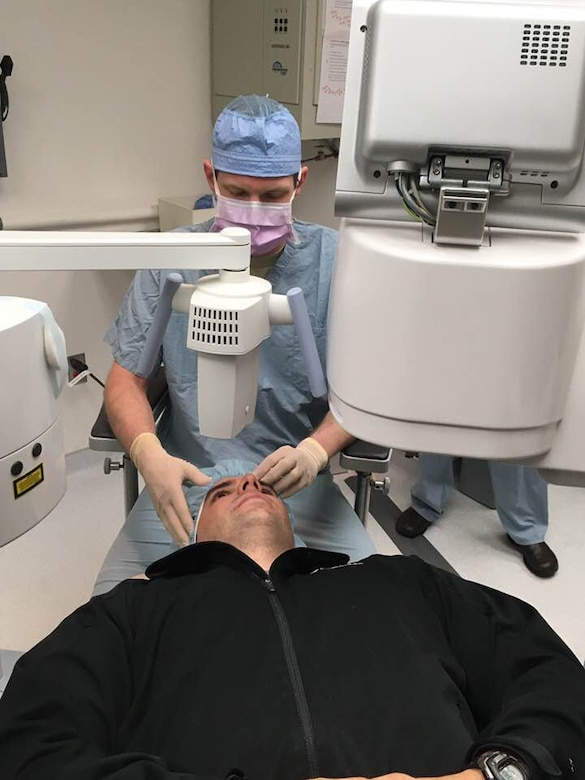By Laurie Wilson, U.S.
Air Force Academy
U.S. AIR FORCE ACADEMY, Colo. -- For patients with the
progressive eye diseases keratoconus and corneal ectasia, the odds of their
careers ending prematurely changed dramatically May 3, when innovative laser
surgery, called collagen crosslinking, was performed here.
Air Force Maj. (Dr.) Marc Neuffer, chief of cornea and
refractive surgery at the 10th Medical Group, corrected satellite engineer Air
Force Capt. Brent Danner’s degenerative eye condition.
‘Groundbreaking Capability’
“This groundbreaking capability to correct the condition
allows us to treat cadets and active-duty members here and from surrounding
areas,” Neuffer said. “They keep their vision and stay eligible for deployment.”
Cadets diagnosed with the condition are not commissioned
unless they receive a waiver, and pilots with the condition are restricted from
flying.
“Keratoconus is most commonly found in individuals between
20 and 30 years of age,” Neuffer said. “It eventually leads to loss of sight
requiring corneal transplantation.”
Neuffer said the condition typically isn’t diagnosed until
after an individual has joined the military and is well into their career. Once
discovered, it becomes a duty-limiting condition that can result in medical
discharge from active-duty service.
Sight-Saving Surgery
Collagen crosslinking was approved by the Food and Drug
Administration in 2016 as a means to treat progressive keratoconus. The surgery
stiffens and stabilizes the cornea which stops the degenerative process.
Patients typically keep their vision and don’t require corneal transplants.
For airmen like Danner, the procedure means the future looks
a lot brighter.
“I’m a little nervous because I’m the first patient here to
get this done,” Danner said. “I’m also excited and positive because of what it
means to my family, my career and for my sight.”
Neuffer’s second patient of the day was a cadet and the
doctor said both surgeries went smoothly. The doctor expects both patients to
quickly recover and return to duty.
The academy is the third Air Force location to offer the
procedure. Currently, there are 15 base patients awaiting the procedure. This
does not include patients from Peterson and Schriever Air Force bases, or Fort
Carson, installations that refer their keratoconus patients to the academy for
the surgery. The academy is also the referral center for 10 additional Air
Force bases in the surrounding states.
“This procedure is a game changer for airmen who would
otherwise have their careers sidelined permanently,” Neuffer said.








No comments:
Post a Comment